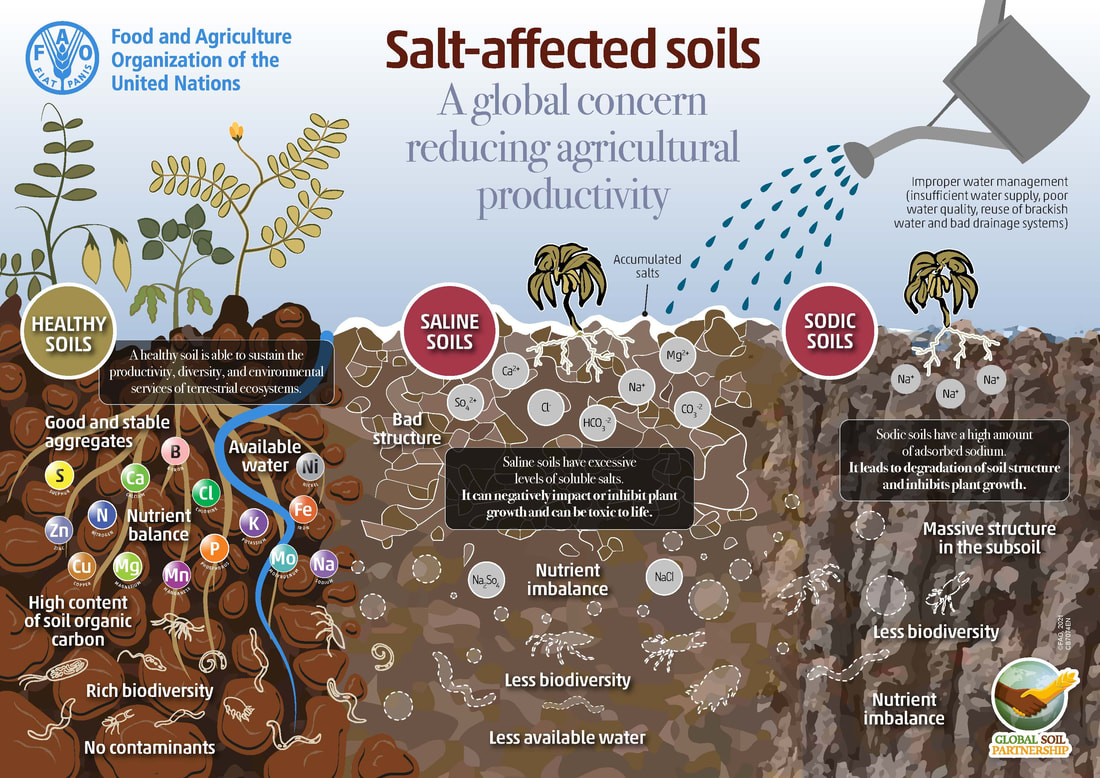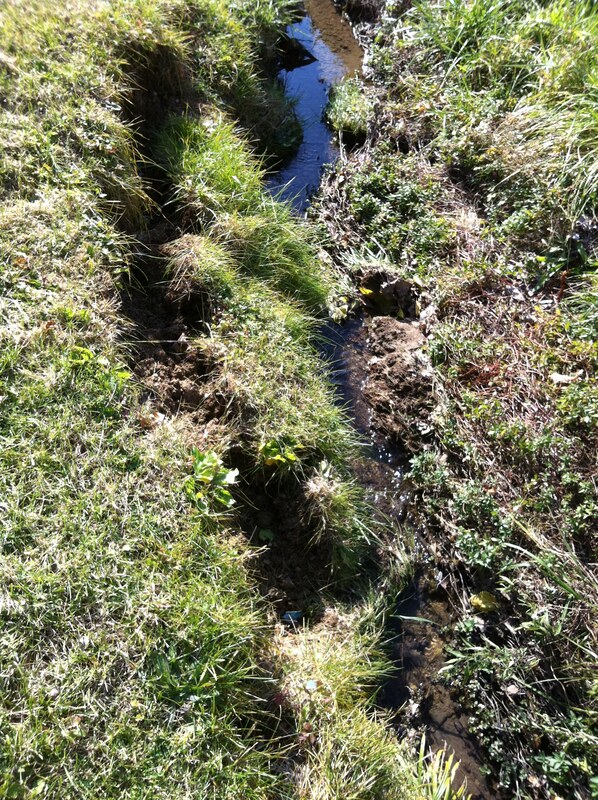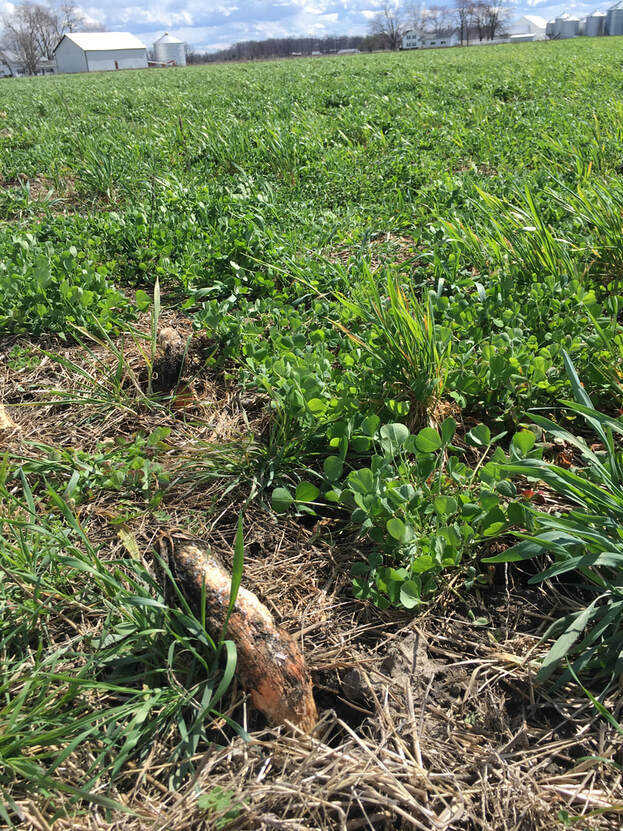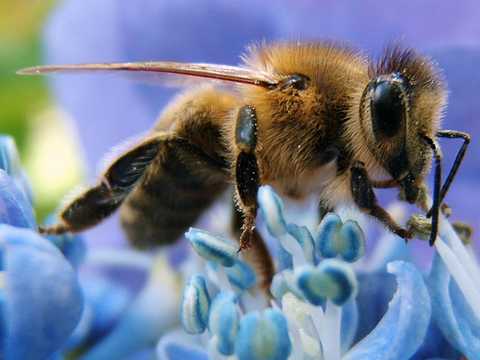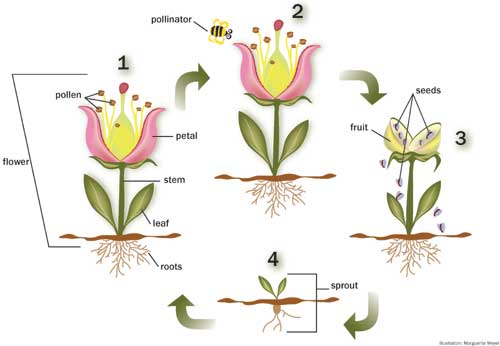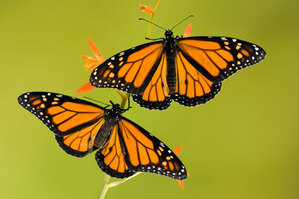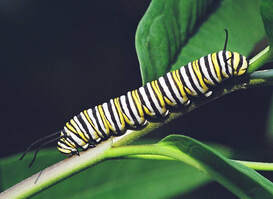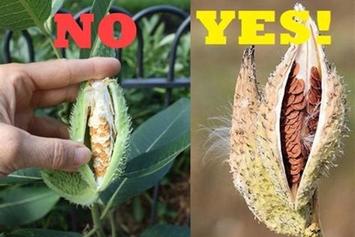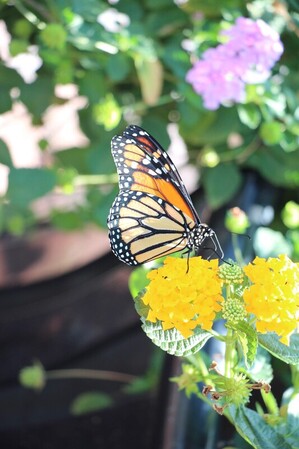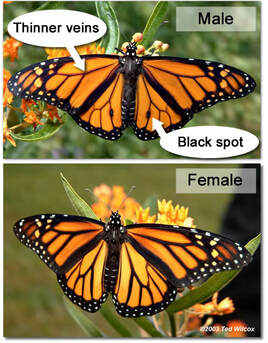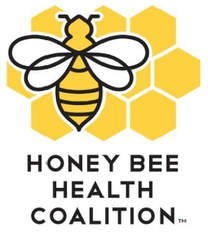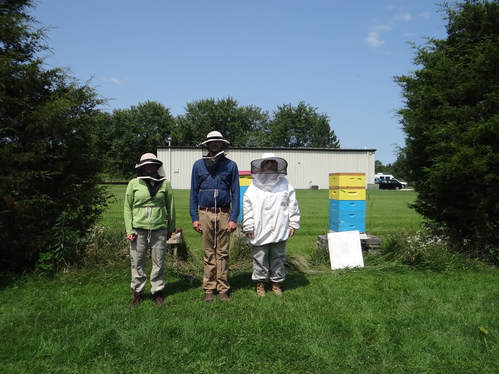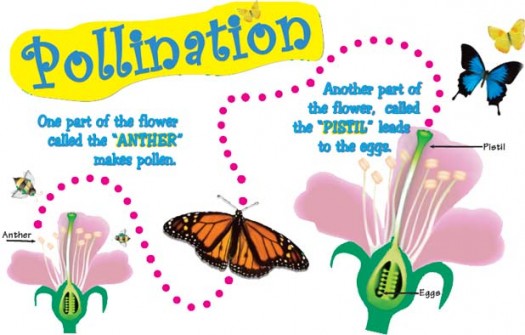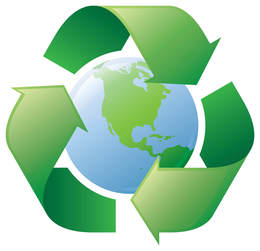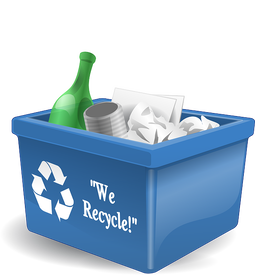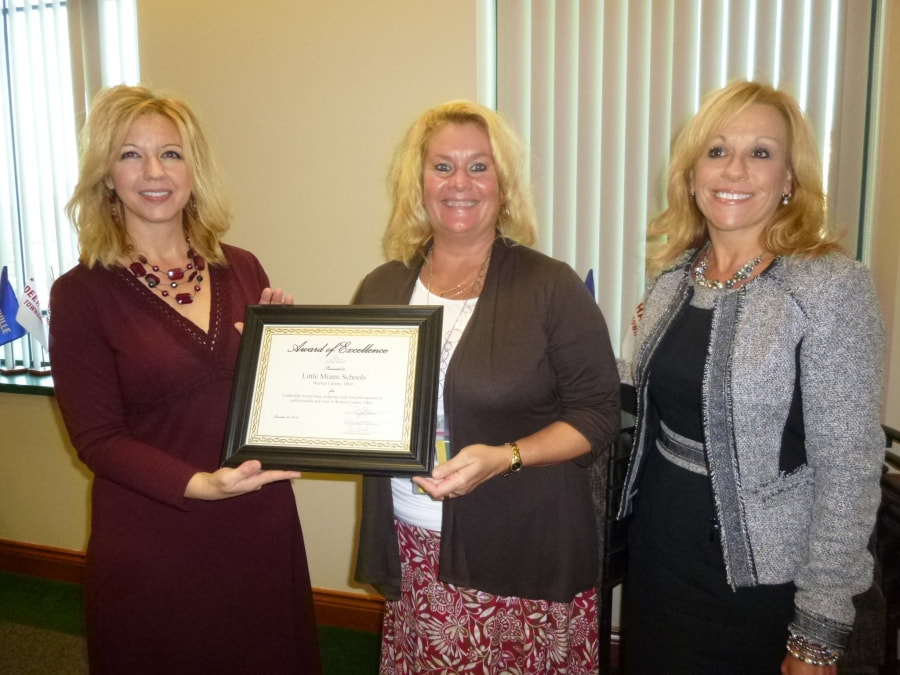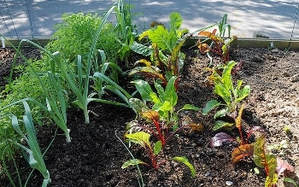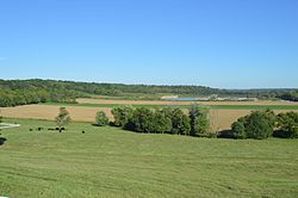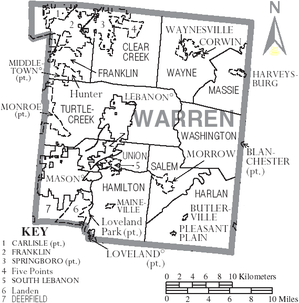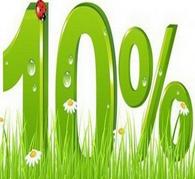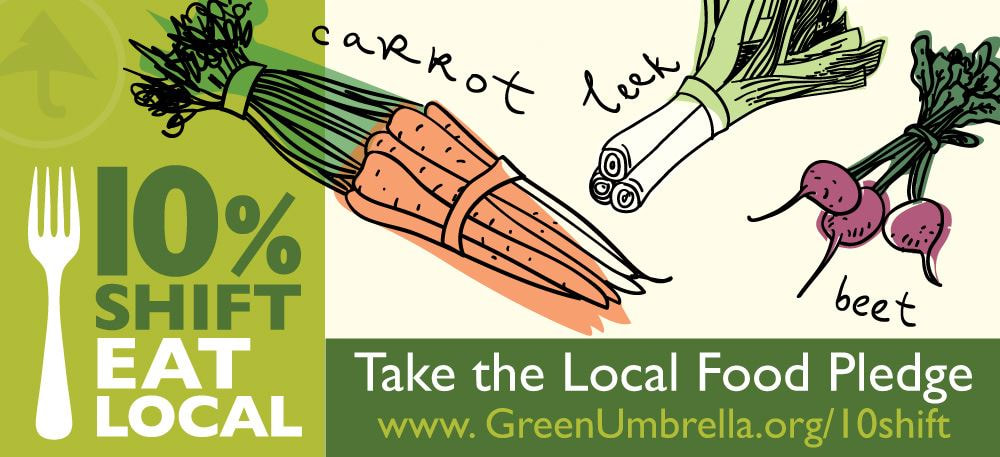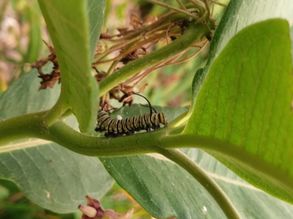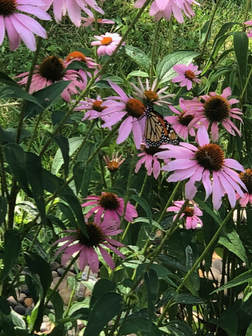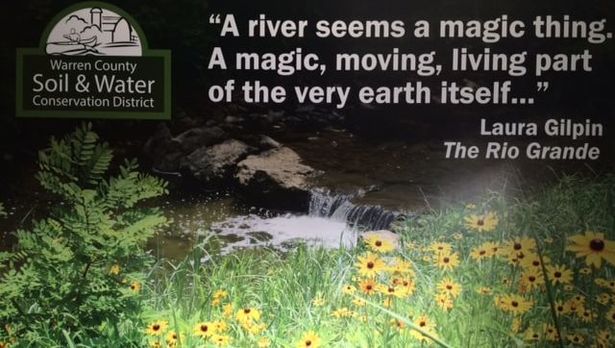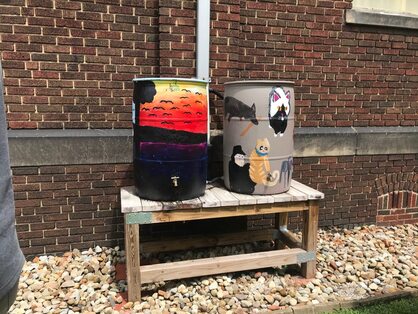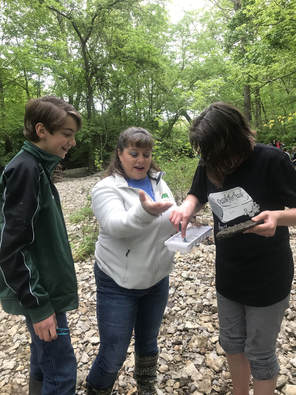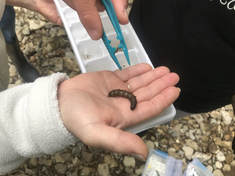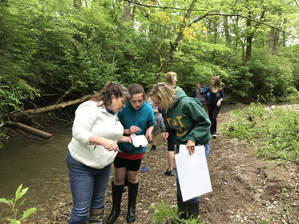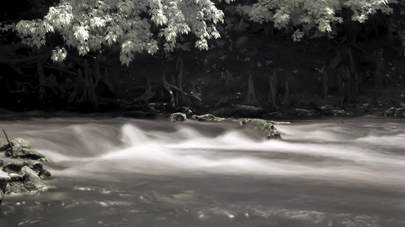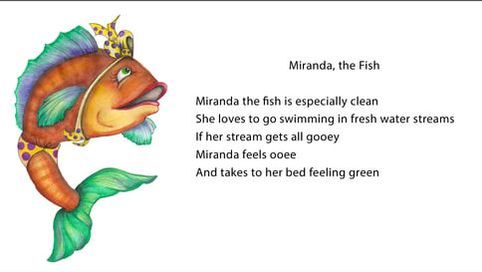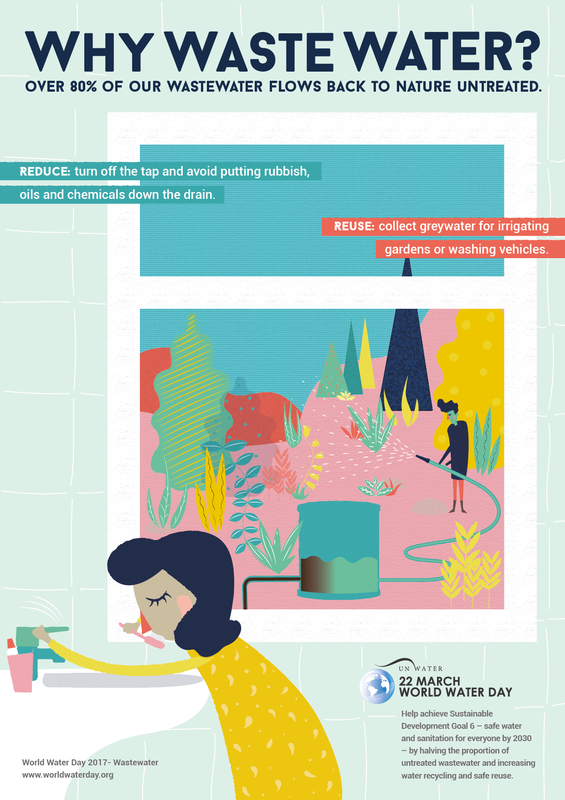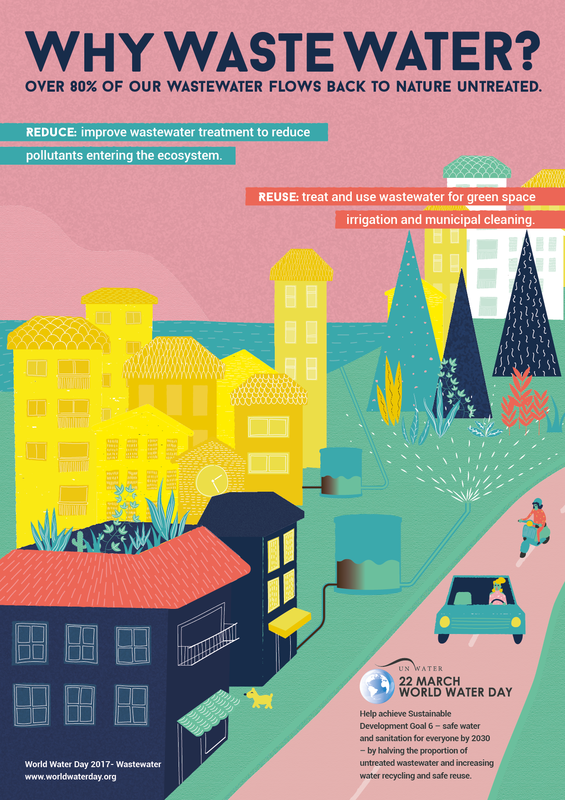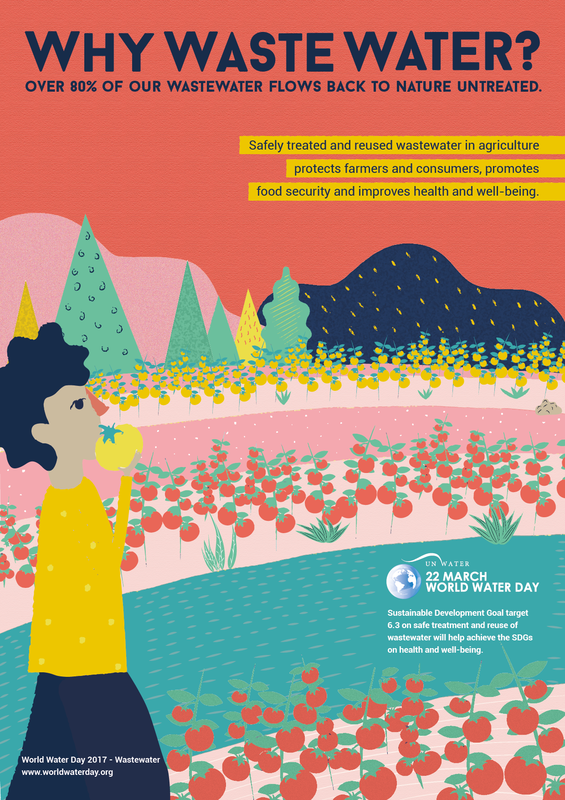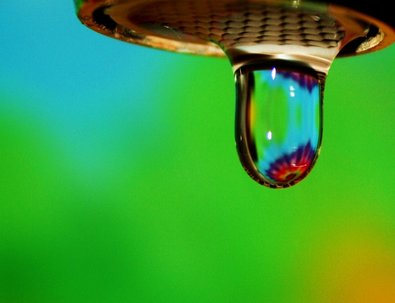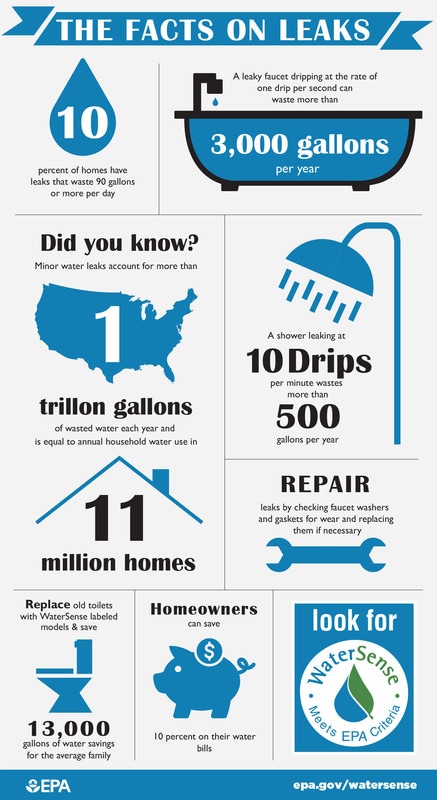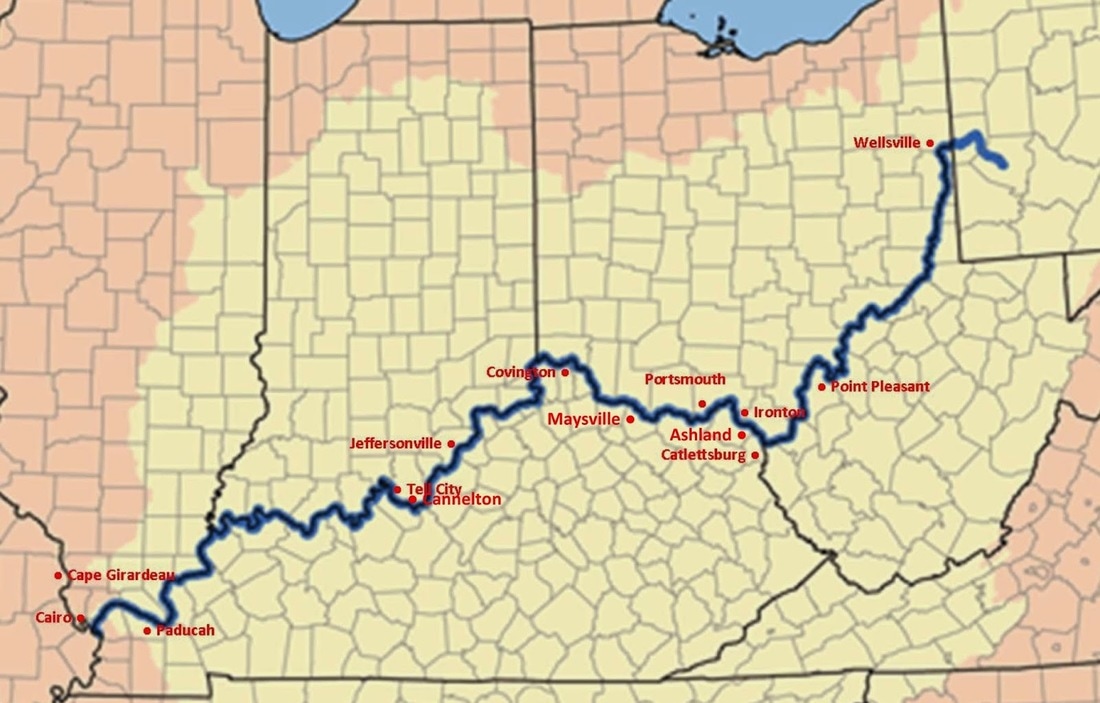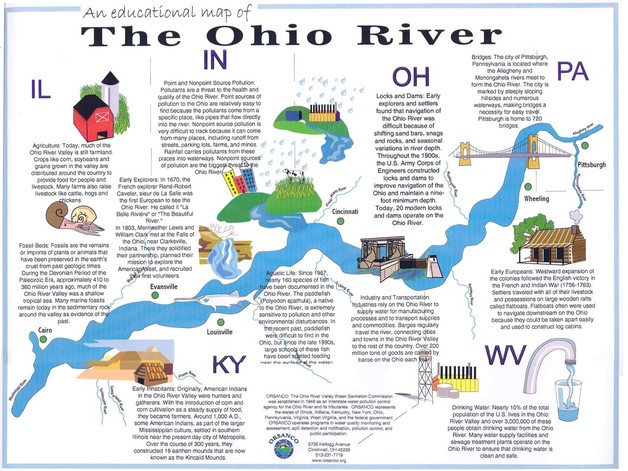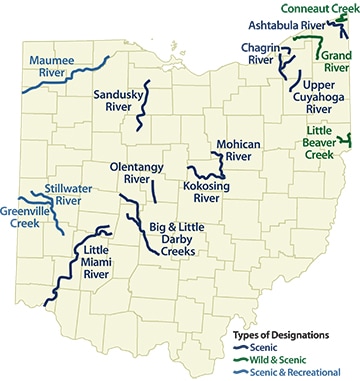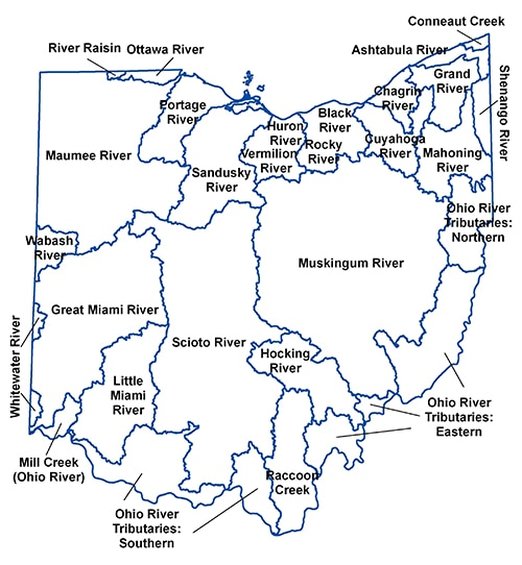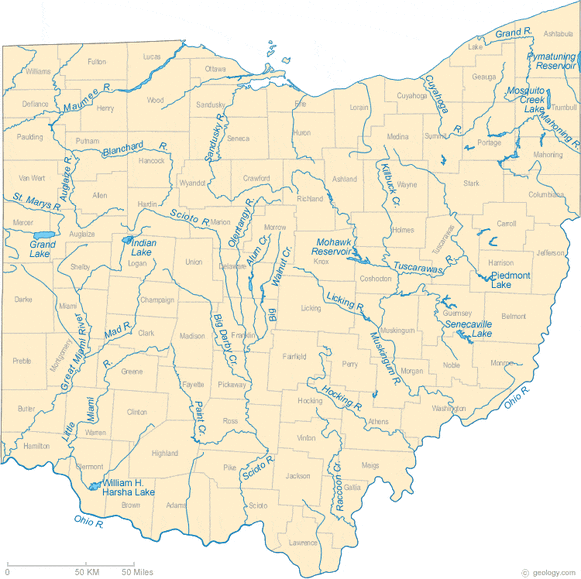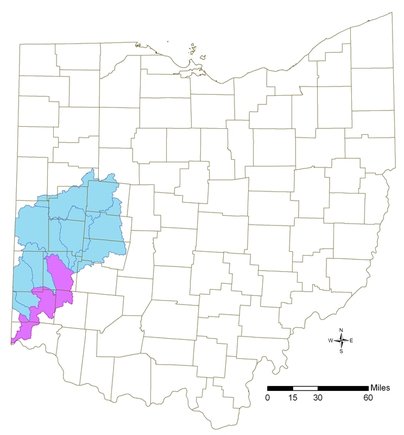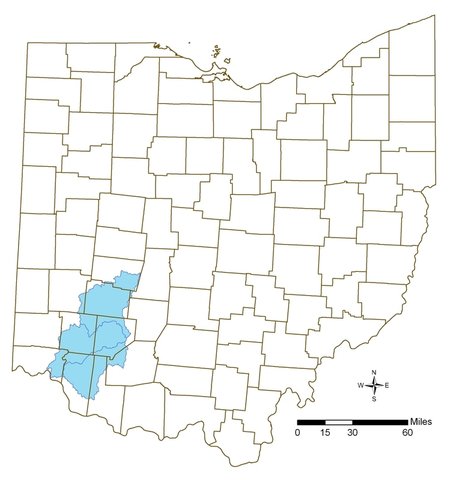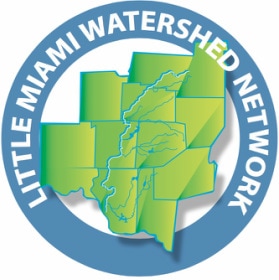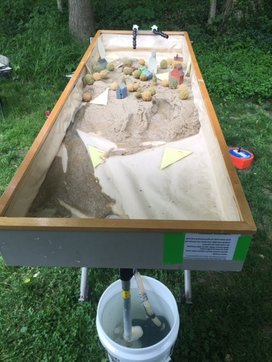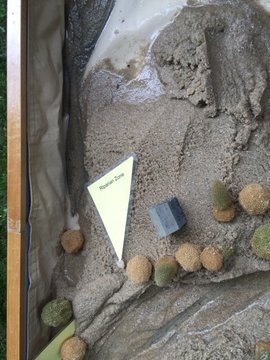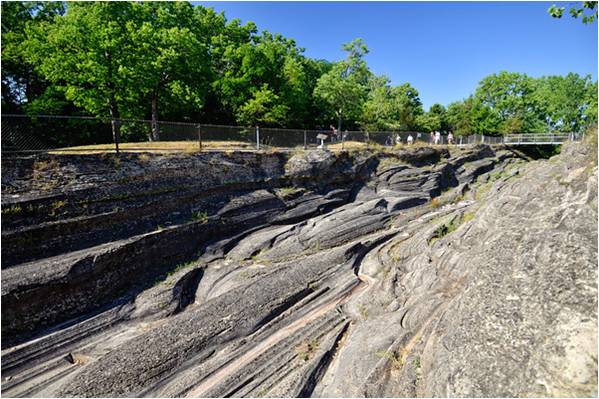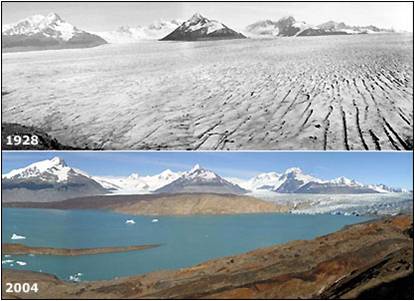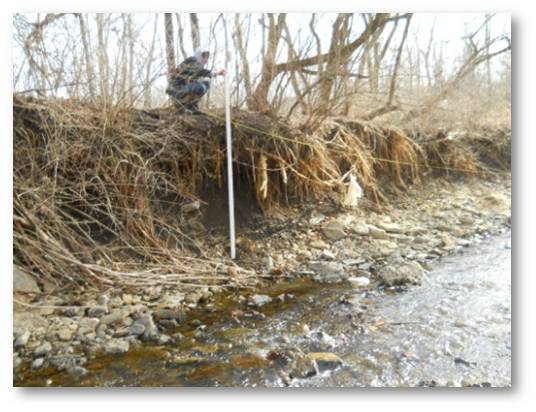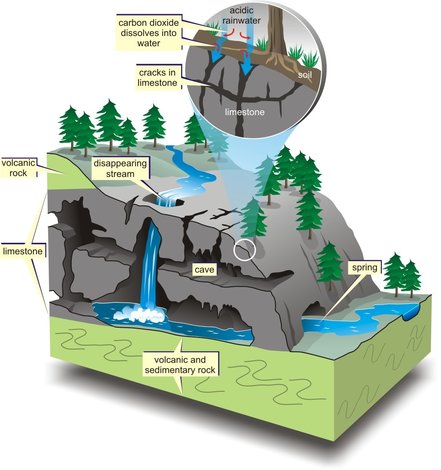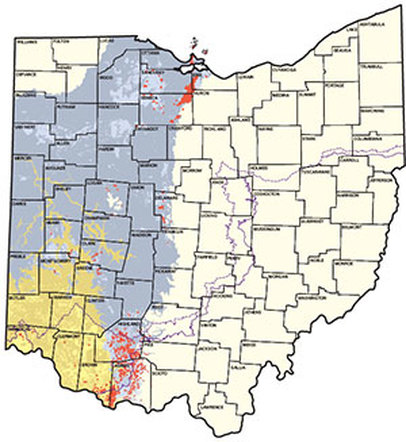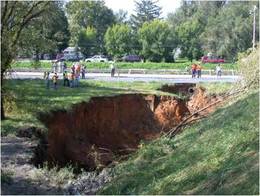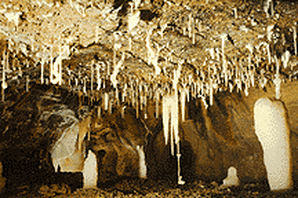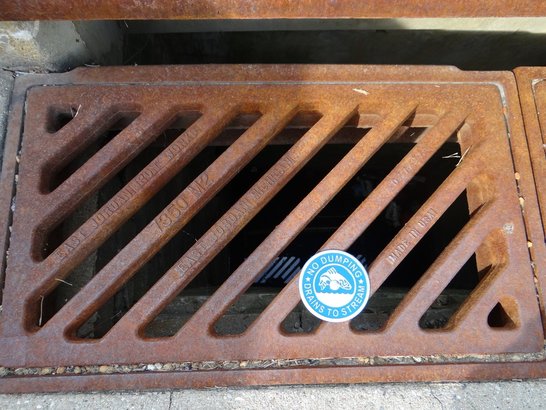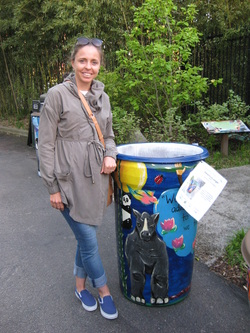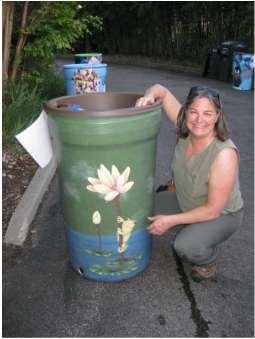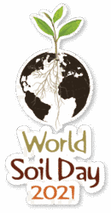 The soils of the world are diverse and allow us to produce a plethora of crops and food to support the global population. World Soil Day, celebrated annually on December 5th, was established by the Food and Agriculture Organization of the United Nations to celebrate one of our most vital resources. Soil is essential for filtering pollutants from our water, storing carbon, and providing the foundation for an estimated 95 percent of the world’s food supply. The theme for the 2021 World Soil Day is Halt soil salinization, boost soil productivity. According to the FAO, soil salinization and sodification are major soil degradation processes threatening ecosystems and are recognized as being among the most important problems at a global level for agricultural production, food security and sustainability in arid and semi-arid regions. The goal of World Soil Day aims to raise awareness of the importance of maintaining healthy ecosystems and human well-being by addressing the growing challenges in soil management, fighting soil salinization, increasing soil awareness and encouraging societies to improve soil health. Soil is a non-renewable resource that we must conserve and care for in order to continue thriving in this world. However soils are subjected to pollution and loss, especially due to erosion. Soil particles can be detached and moved out of a field by both wind and water. Wind can pick up small soil particles, transporting them long distances. Water moving along the ground surface can remove a thin sheet of soil, create small channels, or wash out large gullies. Factors that contribute to erosion: 1. Rainfall — soil erosion increases as length or intensity of rainfall increases 2. Slope length/grade — soil erosion is worse on longer/steeper slopes because water moves faster across the soil 3. Vegetation/residue — growing plants and residue protect the soil from rain impact, slow down flowing water and increase infiltration of water into the soil, as well as protecting the soil from wind erosion. 4. Soil texture/structure — Courser soils (sands) with larger pores allow for faster infiltration (less erosion) of water than soils with finer textures (clays). Soil structure is the arrangement of sand, silt, and clay particles into aggregates. Good structure at the soil surface will also allow for increased infiltration, poor structure leads to more runoff and erosion. Poor structure is associated with low organic matter, equipment traffic on wet soils, and exposure of disturbed soil to adverse weather. The costs: 1. Yield Potential — soil erosion removes topsoil, which is high in organic matter and contains the nutrients essential for crop growth. Erosion generally decreases yield potential. 2. Nutrients — nutrients needed for crop growth are located in the topsoil where fertilizers, crop residues, and manure are applied; soil erosion will decrease the nutrient content. 3. Water holding capacity — loss of topsoil organic matter can change the overall texture of a soil and result in lower water holding capacity 4. Organic matter — topsoil is high in organic matter where crop residues and manure have been added to the soil. Erosion usually results in decreased organic matter. 5. The environment — water quality in streams, lakes, etc. can be greatly negatively affected by sediment and nutrients that are brought in by soil erosion. Wind erosion can result in reduced air quality. Possible Solutions on the Farm: 1. Reduce tillage — tillage exposes soil to the environment and makes it more likely to be eroded by wind or water. 2. Manage crop residue — keeping crop residues on the soil surface helps protect soil from wind, rain, and running water. Residue can protect soil from erosion when crops are not growing in a field 3. Grass waterways — maintaining grass waterways in low areas where a high volume of runoff is possible will slow the speed of running water and allow for sediment to be kept in the field. 4. Cover crops — cover crops allow protection for a field during times of the year when crops are not growing. Cover crops protect the soil from wind, rain, and running water. 5. Row width/direction — narrower crop rows will canopy sooner and allow for better protection of the soil. Crop rows that are planted perpendicular to slopes will decrease runoff and increase infiltration vs. rows that are planted in the same direction as the slope ...And in the Neighborhood: 1. Stabilize soil by mulching with shredded bark, wood chips, leaves, or even pine needles - Look for locally sourced materials and cover bare patches of soil, hill sides, and spaces between plants. 2. Ground Cover - From lawn daisies to clover, keep it covered. The roots of larger perennial plants do the job too of reducing erosion. 3. Rain Gardens & Plant Catchments - Catch and control water when it’s moving downhill by creating a rain garden. A well-positioned rain garden can cut down on erosion and the possibility of pollutants reaching neighboring tributaries by over 30%. To plant a rain garden, select water loving plants adapted to your region and climate, and add stones and other features to direct the water. Soil erosion has a large number of negative effects to both crops and the environment. It is important to use various management practices to protect the soil’s surface and minimize the likelihood of erosion. We all have soil to thank for the food on our tables and our ability to thrive on the planet. Recognizing its importance and what steps can be taken to protect this vital resource are critical to that continued existence.
2 Comments
"Believe it or not, you have a bee to thank
for every one in three bites of food you eat."
Each day, pollinators are responsible for 1 out of 3 bites of food we intake on average. Many pollinators are at a critical point in their own survival; there are various reasons contributing to their decline. One thing is for certain, providing more pollen and nectar sources from native flowering vegetation will improve the health and numbers of our pollinators. Pollinator-friendly gardens and landscapes also revive the health of bees, butterflies, moths, birds, bats and other pollinators.
What is the Million Pollinator Garden Challenge (MPGC)?
The Million Pollinator Garden Challenge is a nationwide call to action to preserve and create gardens and landscapes that help revive the health of bees, butterflies, birds, bats and other pollinators across America. As we explore and enjoy the "great outdoors", take time to make connections between pollinators and the healthy food we eat. http://millionpollinatorgardens.org/partners/
Annual Milkweed Pod Collection:
September 1st and goes until October 30th (pods accepted thru November 1st)
The Ohio Pollinator Habitat Initiative is calling on all Ohioans for another year of Milkweed pod collections! This project started in 2015 as a 7 county pilot and since that time hundreds of Ohioans have worked together collecting thousands of pods across the state.
Milkweed is the host plant for the Monarch butterfly for egg laying and caterpillar rearing. It also serves as a food source for Monarchs and many other pollinator species. . The disappearance of milkweed across the U.S. has contributed to the 80% decline of the eastern monarch butterfly population over the last 20 years. We are working hard in Ohio to change this, and you can help! Here are helpful and simple collection tips: • Before you collect seed pods, become familiar with the common milkweed to avoid harvesting pods from similar plants such as hemp dogbane (a poisonous herb) or swamp milkweed. • It is best to collect the pods when they are dry, grey, or brown. THIS is IMPORTANT! Pod collection starts Sept 1 and runs through Oct 31… please use September as the benchmark time to locate milkweed plants and to keep an eye on the pods while they ripen; then pick them once they look like the picture shown below. • If the center seam pops with gentle pressure, they can be harvested. • Store the pods in paper bags (vs. plastic bags collect unwanted moisture). • Place the date and county collected on the bag when you turn them in. • Keep the pods in a cool, dry area until you deliver them to the nearest collection site as with Warren County Soil and Water Conservation District located in Lebanon, Ohio or you can find the nearest collection site at: www.agri.ohio.gov/wps/portal/gov/oda/divisions/soil-and-water-conservation/find-a-local-swcd/swcd-list
Numerous pollinator species are at risk; many are listed as federally endangered or threatened. Disturbances such as habitat loss, climate change and application of pesticides contribute greatly to diminishing populations and disrupting ecological interactions.
Become a Bee Spotter...The Cincinnati Zoo has teamed up with Bee Spotter to learn more about the bees in the greater Cincinnati area, and we need your help! Simply snap pictures of bees that you see and submit it with a date and location to beespotter.org/cincinnatizoo. An expert will identify the species and add it to the database.
Native & Local Plant Sale:
Visit the Zoo’s EcOhio Farm and Wetland in Warren County, Saturday September 29th, 2019
Learn more about native local plants and about the group "Pollen Nation" that supports pollinator conservation. Multiple beehives on EcOhio Farm are home to thousands of honeybees that help pollinate the entire ecosystem. Observe honeybees up close through an observation frame, and learn how these busy creatures keep people, and their hives, fed.
EcOhio Farm is located at 2210 north Mason-Montgomery Road, Lebanon, OH 45036.
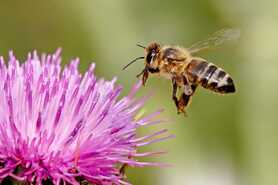
National Geographic - Honeybee Apis mellifera:
animals.nationalgeographic.com/animals/bugs/honeybee/
Top 5 Impacts of Recycling:
Explore ways to Reduce, Reuse and Recycle at Home, at School, at Work & in your Community... Learn how reducing, reusing, and recycling can help you, your community and the environment by saving money, energy and natural resources. Recycling programs are managed at the state and local level—find information on recycling in your community. "Student project leads to 1st foam tray recycler in state" "What began as a Little Miami middle school research project has led to a first-of-its-kind Styrofoam tray recycler in Ohio." Instead of sitting in a landfill for centuries, used Styrofoam school lunch trays are being converted to paving bricks. After undergoing a process called densification (short 10 hour process), the trays are converted into a single square brick that feels like glass or tile but is solid as a rock. Densification involves removing air from Styrofoam and using heat to melt it into a liquid resin that, when cooled, forms bricks from bundling multiple foam lunch trays. Foam lunch trays turned into reusable products: Little Miami is the first school district in the state of Ohio to use a StyroGenie machine to create a closed-loop recycling system for the foam trays used in some of the district’s cafeterias. Findings included that this machine presented a possible cost effective path to reduce the schools’ foam tray footprint by more than 90%, reducing trash volume and waste disposal costs.
Save money by decreasing waste removal costs: "The StyroGenie is a low cost machine that is easy to use and is a responsible choice for the environment. Standing at six feet by four feet, the StyroGenie can hold up to 1200 trays in each cycle. While it takes about ten hours for the trays to be densified, the machine only uses the same amount of electricity as an average hair dryer. In addition, it operates without any moving parts or harmful emissions, making it safe for the environment." - Little Miami Schools Food Service Director, Rachel Tilford, purchased the StyroGenie machine for the Little Miami District after learning about its existence through a group of middle school students (members of a local First LEGO League team). The team’s challenge in the 2015 competition was to identify a piece of trash to research and invent a solution to "help the trash problem". The students chose Styrofoam cafeteria trays; they researched ways on how to reduce waste in Little Miami lunchrooms. That’s when they found out about the StyroGenie. View in the News video: Thank you Mrs. Tilford for taking extra time to meet with Warren County Soil and Water Conservation District and with our LMHS Intern and Volunteer, Ms. Honigford. We also extend our gratitude to LMJH Principal, Mr. Ryan Cherry, for sharing more about the recycling efforts on a "school wide" basis. We enjoyed learning more about this phenomenal idea and how the idea came about.. We hope more districts can "get on board".
Other StryoGenies in the news - Lake Hills Elementary School, Michigan City, "The school's trash output in the cafeteria has gone down from 52 to 15 bags a day." The cost of the StyroGenie for Lake Hills Elementary was $12,000, "but it should pay for itself in two years from refuse disposal savings." Plus, "It's the right thing to do," - STEM coordinator at the school said, Bricks were painted and placed in the school garden for decorative purposes and for a walkway incentive. The city's street department was contacted for additional use for the bricks. "In addition to promoting a safe environment, the Styro-Genie shows students what is possible if they open up their minds." Lake Hills Elementary is also preparing kids to be problem solvers and creative thinkers as to solve some of the problems the world might have in the future. Resources for Students and Educators: https://www.epa.gov/recycle/reduce-reuse-recycle-resources-students-and-educators Office of Environmental Education: epa.ohio.gov/oee/ https://epa.ohio.gov/oee/#131364250-environmental-education Grants: Ohio EPA's competitive grants provide opportunities for communities, local governments, businesses and non-profit organizations to establish and implement recycling, recycling market development, litter prevention and scrap tire recycling programs. See what grants are awarded on an annual basis. Applications are generally available in October and the deadline for application is early February. https://epa.ohio.gov/ocapp/recycling#1843210477-community-and-litter-grant Additional Funding Opportunities: Ohio EPA has funding available for a wide variety of environmental projects such as helping communities plan and complete water and wastewater projects, promoting environmental education and reducing the impact of nonpoint source pollution. For more information about the funding sources available, click on the link below or view a summary of funding programs. https://epa.ohio.gov/Do-Business/Get-Help/Financial-Assistance Rural Action’s Zero Waste Pledge Program encourages local organizations to strive for zero waste. They help businesses and organizations achieve their goals by working one-on-one with them to identify waste that is being produced and ways to reduce it. The zero waste pledge shows the business is committed to using natural resources wisely, increasing its environmental consciousness, and supporting the local economy through waste reduction, recycling, composting, and reuse. http://ruralaction.org/programs/zerowaste/our-services/pledge-program/ We are pleased to have Little Miami High School Senior, Ms. Honigford, intern and volunteer with Warren County SWCD and the Warren County Water Department. We wish Ms. Honigford the best in her endeavors as she further explores environmental engineering careers. https://www.environmentalscience.org/careers
Green Umbrella’s Local Food Action Team (LFAT) is working to strengthen our regional food system by encouraging all consumers to take the 10% Shift: Eat Local Challenge.
PROMOTE LOCAL FOOD CONSUMPTION
Green Umbrella Regional Sustainability Alliance Mission: The Local Food team brings together local farmers, distributors, farmers markets, cooperatives, community gardeners, community supported agriculture organizations, health professionals, restaurants, extension services, educational organizations, government entities and processors to develop strategies to increase the demand for local foods, increase production and identify new markets for local foods. You can participate by taking the 10% Shift to Local Food and pledging to shift 10% of your food budget to purchase local foods. Learn more here! You can also join in the work by joining Green Umbrella and attending Local Food Action Team meetings--typically held the first Thursday of the month. greenumbrella.wildapricot.org/Local-Food Action Plan:
Greener Living: https://www.epa.gov/environmental-topics/greener-living
Information about state-level Master Gardener Volunteer programs and activities is available at http://mastergardener.osu.edu. Warren County Extension will be hosting the next Master Gardener volunteer class beginning in September 2018. This training will run through November. If you have any questions contact Beth Giffin at 513.695.1311 or [email protected] . The application deadline is August 17, 2018. You must be accepted to the program, attend an eight-week class, and complete 50 hours of volunteer activity. More information, including costs, a program application and a flyer can be found here: https://warren.osu.edu/program-areas/master-gardener-volunteers/becoming-master-gardener Active Master Gardner Projects in Warren County, Ohio: https://warren.osu.edu/program-areas/master-gardener-volunteers/active-master-gardener-projects Working with county Extension personnel, Master Gardeners provide such educational services to their communities as: answering gardening questions from the public; conducting plant clinics; gardening activities with children, senior citizens or disabled persons; beautifying the community; developing community or demonstration gardens; and other horticulture activities. Contact a Project Leader to Volunteer!
Local Ohio State University Extension Warren County Office: https://warren.osu.edu/program-areas/master-gardener-volunteers Drinking water comes from streams, rivers lakes and ground water (aquifers). Protecting these water sources is key to sustaining safe drinking water supplies. When the water in our rivers, lakes and oceans becomes polluted, it endangers wildlife and people. Pollution makes our drinking water unsafe and threatens the waters where we enjoy swimming, fishing and recreational activities. For additional "Water Topics", EPA research supports water protection efforts under the Clean Water Act and Safe Drinking Water Act. THOMAS C. SPELLMIRE WATER CONSERVATION TRAILER Protect Sources of Drinking Water Roles in Source Water Protection Protecting source water is everyone's responsibility. Everyone has a role, including:
Install a Rain Barrel: Store rainwater from rooftops that can be used on lawns and gardens. Stormwater includes rainwater that runs off hard surfaces and carries pollution to our streams. Individuals can further take action to protect their water, for example by:
Water quality is commonly determined by sampling a stream for macroinvertebrates.
The Little Miami River watershed is located in southwestern Ohio. It drains a total of 1,758 square miles and flows through all or part of 11 counties. Major municipalities partially or fully in the watershed include Xenia, Beavercreek, Wilmington, and Cincinnati and some of its suburbs. See further Ohio EPA studies on the Little Miami River: http://epa.ohio.gov/dsw/tmdl/ LittleMiamiRiver.aspx http://epa.ohio.gov/portals/35/tmdl/Lower_LMR_Factsheet.pdf Exploring Watershed Geography USGS (U.S. Geological Survey) provides science about the natural hazards that threaten lives and livelihoods; the water, energy, minerals, and other natural resources we rely on; the health of our ecosystems and environment; and the impacts of climate and land-use change. Their scientists develop new methods and tools to supply timely, relevant, and useful information about the Earth and its processes. www.usgs.gov/ Native Ohio Tree Species Suitable for Planting within 1,000 Feet of State Wild, Scenic and Recreational Rivers https://docs.wixstatic.com/ugd/19e2af_934d025960a743c6bb2987ae13cbccbe.pdf The most effective way to counter this increase in impervious surface is to protect and restore the riparian corridor or riparian buffer. Trees and wetlands play an important role in slowing the flow of water and filtering out the impurities prior to the run off entering the river. www.epa.gov/sourcewaterprotection/what-you-can-do-protect-source-water Meet Fred's Friend, Miranda!
Happy earth day!Each year, Earth Day—April 22—marks the anniversary of the birth of the modern environmental movement in 1970. On April 22, 1970, 20 million Americans took to the streets, parks, and auditoriums to demonstrate for a healthy, sustainable environment in massive coast-to-coast rallies. Groups that had been fighting against oil spills, polluting factories and power plants, raw sewage, toxic dumps, pesticides, freeways, the loss of wilderness, and the extinction of wildlife suddenly realized they shared common values. Earth Day 1970 achieved a rare political alignment, enlisting support from Republicans and Democrats, rich and poor, city slickers and farmers, tycoons and labor leaders. By the end of that year, the first Earth Day had led to the creation of the United States Environmental Protection Agency and the passage of the Clean Air, Clean Water, and Endangered Species Acts. Today, the fight for a clean environment continues with increasing urgency, as the ravages of climate change become more manifest every day. To learn about different ways you can take action in support of Earth Day, visit http://www.earthday.org/take-action/ You can also make decisions every day to live in a more sustainable manner!
http://theartofsimple.net/tips-to-go-green-at-home/ Learn more about protecting our waterway - keep our watershed and our drinking water safe from pollution: https://www.epa.gov/environmental-topics/water-topics#our-waters United Nations Framework Convention on Climate Change: unfccc.int/paris_agreement/items/9485.php Climate 101 - The Climate Reality Project: www.climaterealityproject.org/climate-101 Tree Planting Challenge "Taking Root": http://www.takingroot.info/tree-planting-challenge/ Visit our Conservation Blog for more ways to help out planet. World Water Day, on 22 March every year, is about taking action to tackle the water crisis. Today, there are over 663 million people living without a safe water supply close to home, spending countless hours queuing or trekking to distant sources, and coping with the health impacts of using contaminated water. (http://www.worldwaterday.org/) This year, the theme for World Water Day is wastewater, and issues surrounding pollution and nutrient loss. Reducing and reusing our wastewater by utilizing grey water for gardens, and for green spaces in urban areas can help conserve this valuable resource of water! Get the facts: Why waste water?
For educational tools and games about water sustainability, check out: http://www.games4sustainability.org/world-water-day-2017/ MARCH 20-26 "is Fix a Leak Week 2017"
sponsored by the U.S. Environmental Protection Administration (USEPA) https://www3.epa.gov/watersense/our_water/fix_a_leak.html Communities across the globe are celebrating their rivers today, seeking to educate people about the threats facing our rivers, and learning about better water and energy solutions. Warren SWCD wants to take a moment to recognize the importance of our own local Ohio rivers! Ohio has 254 principal streams and large rivers in Ohio, comprising 5,679 linear stream miles (http://www.epa.ohio.gov/portals/35/tmdl/2012intreport/ir12sectionbfinal.pdf). The Ohio River forms the entire 451-mile southern boundary of Ohio, though the entire river stretches 981 miles from Pittsburgh, PA to Cairo, IL, and touches 6 states. The Environmental Educational Council of Ohio and the Ohio EPA Of Ohio's rivers, 14 have been designated Scenic Rivers. Scenic rivers are classified according to the outstanding qualities a stream possesses. The Scenic Rivers Act provides three categories for river classification: wild, scenic and recreational. Stream length, adjacent forest cover, biological characteristics, water quality, present use, and natural conditions are all evaluated when considering designation. In 1968, Ohio pioneered the river preservation movement with the passage of the nation's first scenic rivers act. A state program was created to protect Ohio's remaining high quality streams for future generations. Scenic rivers retain most of their natural characteristics at a time when many rivers reflect the negative impacts of human activities. Scenic river designation is a cooperative venture among state and local government, citizen groups, and local communities within a watershed. The designation process depends ultimately upon support and protection authority of local governments and citizens. The ODNR studies the proposed river to determine whether it meets the scenic river criteria. All interested parties, including state and local officials, community groups and concerned citizens, meet to discuss the scenic rivers program and to encourage local support for the protection of the river as a natural resource. A legal notice of the intent to designate a river as wild, scenic or recreational is issued by the Director of Ohio DNR 60 days prior to the declaration to allow sufficient time for public comment. Following the public comment period, ODNR responds to public concerns and the Director may declare a river a component of the state scenic rivers system. On April 23, 1969, the Little Miami River which flows through Warren County earned the distinction of becoming Ohio's first designated State Scenic River.
watersheds of warren countyWhat is a watershed? A watershed is the area of land that drains into a lake or stream. Watersheds can be small - like the area that drains into the creek behind your house. Or, watersheds can be large - consider all the land, streams and rivers that drain into the Ohio River or Lake Erie (epa.ohio.gov) Great Miami River watershed (blue); Lower Great Miami River watershed (purple) Little Miami River watershed Love your watershed!Want to help keep the Little Miami River watershed clean and protect surrounding habitat? There are simple steps you can take at home! 1. Use less water Every time you flush your toilet or leave the water running while brushing your teeth, it increases the load on your sewer system. Conserve water. 2. Keep your car repaired When oil leaks from our cars it is eventually sent down storm drains and ends up in the watershed. If your car has sprung an oil leak, get it fixed. Also, be careful while adding oil and make sure any used oil is properly recycled. 3. Use organic gardening techniques Go with natural fertilizers and stick to the directions. Make sure you do not overuse or apply on days when they are likely to be quickly washed away by rain. Just like automotive oil ends up in the watershed, so does a large amount of the fertilizers and pesticides you use in your garden. This causes rivers and lakes to get a huge dose of nitrogen which makes algae grow abnormally. The chemistry of our freshwater lakes and streams gets totally out of whack and fish kills are common, along with a host of other problems. 4. Compost and contain yard wasteToo much organic material clogs streams and when it breaks down, it can upset the water chemistry. Compost yard waste and make sure it’s in bins so it doesn’t wash away during a heavy rain. 5.Deal with household chemicals and medicines properly Check your local environmental health agency or solid waste department for drop-off locations or specially scheduled pickups for toxic household chemicals, like solvents, motor oil and paint. Do not flush unused medicines down the toilet. These are starting to turn up in local drinking water supplies. Find the best way to dispose of them locally. Also, use natural cleaning products around the house. 6. Go sustainable Frequent your local farmer’s market and find organic farmers. Doing business with them helps keep fertilizers and pesticides out of the environment and it also reduces the need to truck food over long distances, which reduces all the pollution associated with transportation. Also, Ohio is a free choice state for energy suppliers so you can buy electricity from sustainable sources and still be serviced by your local utility company. You can research 100% green energy suppliers such as CleanChoice Energy and Star Energy. It will reduce acid rain, which is one of our biggest problems. 7. Don’t litter While one may think we should not have to remind folks not to litter, still some people have not gotten the message. Go to any river or lake popular with fishermen and you will find plastic wrappers from lures and bait at the water’s edge. And, if you litter in your neighborhood, it will make its way to a storm drain and get into our streams, lakes and eventually into the ocean. Finally, why not take it a step further and volunteer for a river or lake cleanup day project? Check out http://www.lmriverkleeners.org/index.html for more information and volunteer opportunities! Working in classrooms across Warren County, we often hear 4th graders reciting rhymes, chants, or songs aimed at committing to memory the three processes that change our Earth's surface; Weathering breaks or changes it, Erosion takes or carries it, and Deposition drops or deposits it. Or in 8th grade classes, we witness students further investigating how combinations of constructive and destructive geological processes form Earth’s surface. Understanding these concepts falls in line with Ohio Learning Science Standards and also helps lay the foundation for students to observe and learn how and why our planet is shifting and changing. Then they can better study how human activity may play a role in the acceleration or deceleration of these changes, for we too are part of this system. One way Warren County SWCD assists in this learning experience is to bring in our interactive stream/geology table to the classroom for students to visually observe destructive erosion and constructive deposition in action. Students have the opportunity to make hypotheses about what they may see, and then participate in creating stream ecosystems and/or various land forms. Multiple scenarios can be developed to see how the addition or removal of elements changes the rate of weathering, erosion, and deposition on the model sand table. By being able to visually watch formation of land forms, soil erode from river cut banks, and deltas form via deposition, students can connect the definition of these processes with real life effects. They also gain correct terminology and vocabulary to better discuss a river ecosystem and prepare them for future ecology studies.
Weathering, erosion, and deposition are constantly occurring in our environment. Agents of change include water, wind, gravity, and ice. Studying earth formations through hands on demonstrations of different types of weathering and erosion, sets up students to delve into both the past and the future. Exploring topics like glacial evidence of mechanical weathering provides insight into how the Ohio landscape started to emerge. http://geology.teacherfriendlyguide.org/index.php/glaciers-mw/glaciers-landscapes-mw https://nsidc.org/cryosphere/glaciers/questions/land.html Kelly's Island, Sandusky, Ohio And how glacial melting from climate change may alter landscapes in the future... Muir's Inlet, Riggs Bay glacier River systems connect to topics of erosion which impacts human development and water quality issues. Sediment pollution in river systems affects ecological balances and drinking water. Streambank erosion in tributaries contribute to overall stream health. Turtle Creek, Lebanon Ohio Chemical weathering and erosion contribute to karst formations like sink holes and caves. These underground wonders can be explored with different activities and demonstrations. Ohio karst areas |
Details
Author:
|
||||||||||||||||||||||||||||||||||||||||||||||||||||||||
|
|
Contact:PHONE: (513) 695 - 1337
EMAIL: [email protected] HOURS: Monday - Friday 7:30am - 4:00pm (except holidays) Connect:Warren County Soil & Water Conservation District Copyright © 2016
Warren SWCD Privacy Notice. Emails are serviced by Constant Contact. Constant Contact's Privacy Notice. |
